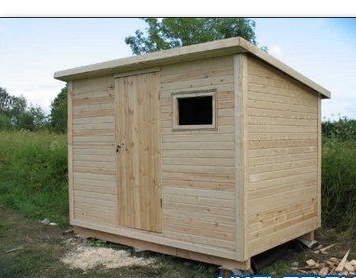
Each summer resident, or the owner of a suburban area, with the onset of autumn and the harvest of the ripened crop, the question arises of how to preserve all this wealth and stock it for good, so that nothing is lost. A huge number of apples, pears, plums are lost at the dacha plots, because the owners often don’t know where to get such a high yield from their plot and how to save it.
The methods of preserving fruits and vegetables include preservation, or storage in the cellar, or in the basement, but there is such an old proven old-fashioned way as drying fruits and vegetables. This is the easiest way to keep the crop and stock them up for the future until the next summer season. Since the process of drying fruits and vegetables goes through, the simplest and most primitive way is to cut our future dry fruit into equal slices, put on a baking sheet, cover with gauze and put on the street on the sunny side, or on the roof, as is done in villages and villages. This method is called passive, that is, you don’t care put in the sun and forgotten until the evening, nature will do everything. And there is a more efficient and faster way of drying dried fruits and it is called intensive when the fruits are cut into slices on the substrates, lie on the shelves in a previously prepared chamber, where heat and air are forcedly supplied by ventilation, and warm moist air from the evaporation of moisture from fruits and vegetables rises to the top and goes out through the ventilation channels.
It was this method that the author used to build a dryer for vegetables and fruits on his site, because the yield of his fruit trees is very large and it is necessary to dry this material as soon as possible.
And so what did he need to build this design.
Materials: boards, roofing iron, fan, metal stove, plywood.
Instruments: hacksaw, ax, drill, hammer, scissors for metal.
The author has not preserved photographs of his construction, but he gives diagrams and drawings. And so at first he built a small barn, which will serve as a chamber for drying fruits and vegetables.
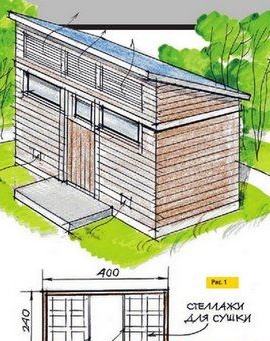
Then I installed drying shelves in the chamber.
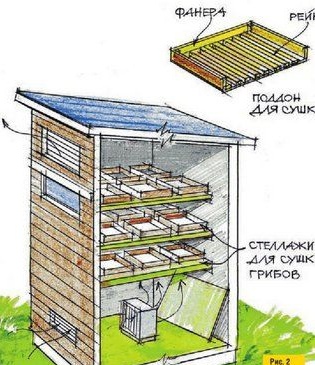
Then he installed fans for forced air injection and subsequent ventilation.
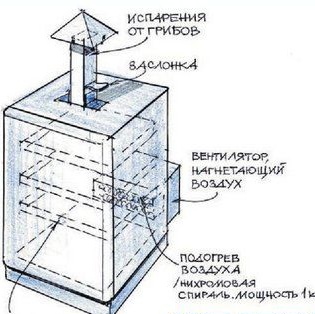
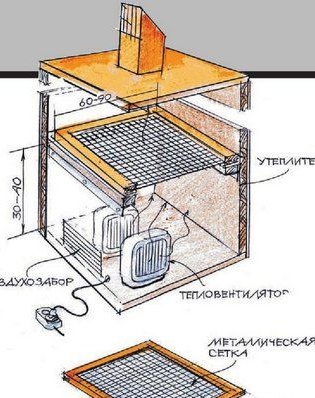
Further, the author installed a metal furnace in the corner of the drying chamber to increase the temperature and constantly maintain it in the room.
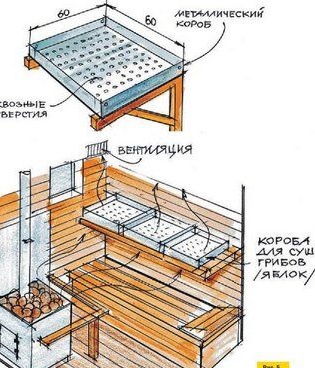
That's essentially all, he charged the first batch for intensive drying of fruits and vegetables.
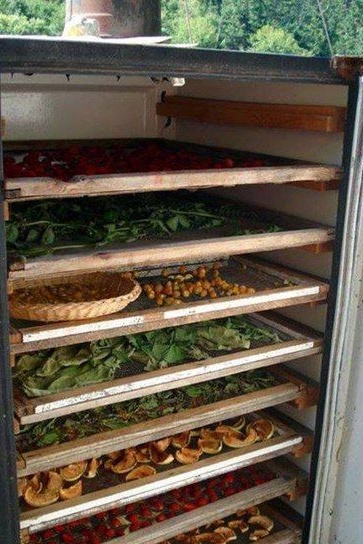
Now the author is not worried about his harvest, everything will be dried and stored in the best possible way. Just after the whole crop with cottages it will be cleaned and taken out, this room can be used for other household needs, for example, storage of garden equipment and other summer cottages.
